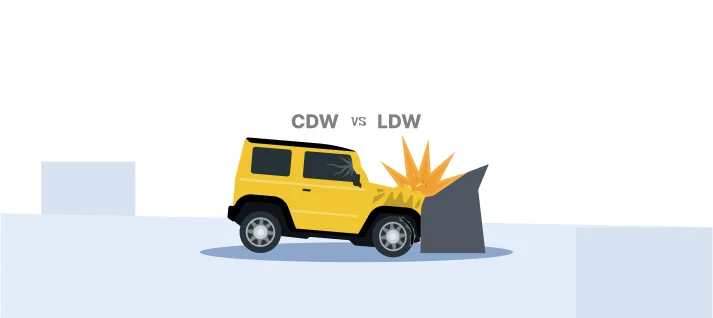Indian Motor Vehicle Act 1988: Features, Rules and Penalties
The Indian Motor Vehicle Act of 1988 significantly shapes India's road transport, vehicle regulation, and traffic discipline. The legislation, which was established by Parliament, provides specific guidelines on several subjects related to driving, such as driver licensing, environmental compliance, and road safety, amongst others.
Given the significant increase in car ownership nationwide, it is now more crucial than ever to learn about the Motor Vehicle Act. Whether you drive frequently or commute as a passenger, familiarising yourself with the rules and regulations is fundamental. With this knowledge, you can stay in compliance and steer clear of any fines that could result from infractions.
Here is an extensive overview of the Indian Motor Vehicle Act's main clauses, some of the updated rules, and the related penalties.

Table of Contents
Key Features of the Motor Vehicle Act 1988
Regulation of licensing and registration
No one is permitted to operate a motor vehicle without a valid driver's license under the Indian Motor Vehicle Act of 1988. It stipulates:
-
The minimum age is 16 for two-wheelers without gears (not exceeding 50cc) and 18 for non-transport vehicles.
-
Tests and training through driving schools authorised by the government.
-
Procedures for renewal and provisions for learner's licenses.
-
Registration of vehicles is also mandatory. Owners are required to get a Registration Certificate (RC) and register their vehicle with the regional transport office (RTO) in their area.
According to the Ministry of Road Transport and Highways (MoRTH), vehicles must possess high-security registration plates (HSRP).
Road safety measures
The Motor Vehicle Act mandates:
-
Two-wheeler riders should wear helmets.
-
Everyone riding a four-wheeler must wear a seatbelt.
-
Mobile phone usage while driving is prohibited.
-
Overloaded or unfit vehicles are subject to restrictions.
-
Vehicle safety standards, including airbags and ABS in newer models.
These regulations are being enforced across the country, and noncompliance carries penalties under the Act's amendments.
Environmental compliance
The Act authorises the Central Government to set environmental standards. Accordingly, MoRTH enforces emission regulations such as Bharat Stage VI (BS6) and mandates:
-
Certificates of Pollution Under Control (PUC)
-
Frequent testing for emissions
-
Compliance with notified requirements for fuel types, engine emissions, and other factors.
Noncompliance may result in penalties or even termination of vehicle registration.
Updated Rules and Amendments
2019 amendment highlights
The Motor Vehicles (Amendment) Act, 2019, brought in wide-ranging reforms aimed at enhancing road safety, accountability, and citizen protection. Notable changes include:
-
Significantly higher fines for violations like speeding, not wearing a helmet, drunk driving, and driving without a license.
-
Online learner’s licence issuance and increased digitalisation of licensing and registration processes.
-
Vehicle recall policy, empowering the government to direct manufacturers to recall vehicles with safety or environmental defects.
-
Motor Vehicle Accident Fund to provide immediate financial assistance to victims of road accidents, regardless of fault.
-
Cashless treatment during the golden hour (first 60 minutes post-accident) in notified hospitals.
-
Increased compensation for victims in hit-and-run cases: ₹2 lakh for death and ₹50,000 for injury.
-
Accountability for poor road design or maintenance, allowing victims to claim compensation from road contractors or civic agencies.
-
Regulation of aggregators (cab services like Ola, Uber) under a new licensing framework.
-
National Transportation Policy to coordinate urban and rural transport development across states.
These reforms reflect a shift from reactive to proactive road safety policy, with greater emphasis on technology, victim rights, and enforcement consistency.
Use of technology
To modernise enforcement, the Act enables digital systems such as:
-
E-challan system: Violations like speeding or red-light jumping are now captured digitally and fines are issued online via the Parivahan platform.
-
Automated traffic surveillance: By using AI-powered cameras and sensors at junctions, accuracy is improved, and less manual intervention is required.
These resources contribute to the development of an enforcement system that is more effective and transparent.
Penalties for Traffic Violations
Common violations and fines
The amended Motor Vehicle Act prescribes clear penalties. Below are common offences and associated traffic penalties in India:
| Violation | Penalty (₹) |
| Driving without a licence | ₹5,000 |
| Over-speeding | ₹1,000–₹2,000 (for Light Motor Vehicle) |
| Not wearing a helmet | ₹1,000 + 3-month licence suspension |
| Drunk driving | ₹10,000 and/or 6 months imprisonment |
| Using a mobilephone while driving | ₹1,000–₹5,000 |
| Signal jumping | ₹1,000–₹5,000 |
Appeal process
If you believe a traffic challan has been wrongly issued, you can dispute it through an official appeal process:
1. Verify it on the Parivahan portal.
2. Gather evidence (footage, photos, GPS logs).
3. File an appeal online or at the traffic police office.
4. Attend a hearing if required.
5. Await the final decision.
Submit your appeal within 60 days of the challan date to be eligible for review.
Summing Up
The Indian Motor Vehicle Act is crucial in setting India's road safety standards and maintaining compliance through legal responsibility. In addition to avoiding traffic fines in India, drivers who follow these guidelines and remain informed also help to make the roads safer for everybody.
Financial protection is another aspect of compliance. The Act requires that you have Car Insurance. A third-party policy covers legal responsibility, but a comprehensive policy provides complete protection.
Shriram Car Insurance provides affordable, configurable plans with quick claims processing, extensive network garages, and add-ons like zero depreciation coverage. It's an excellent choice for responsible car owners looking for peace of mind and legal compliance. Explore our plans today!
FAQs
1. What is the Indian Motor Vehicle Act 1988?
This central law regulates all facets of vehicle use, including safety, registration, licensing, and fines.
2. What changes were introduced in the updated Motor Vehicle Act?
The 2019 amendments raised penalties, introduced tech-driven enforcement, and added strict rules against underage and drunk driving.
3. How much is the fine for driving without a licence?
Under the updated Motor Vehicle Act, the fine is ₹5,000.
4. Can I dispute a traffic challan?
Yes. Use the Parivahan portal or approach the traffic court with supporting documents.
5. Is Car Insurance mandatory?
Yes. As per the Indian Motor Vehicle Act, third-party Car Insurance is legally required to drive a vehicle in India.



 5890
5890


















